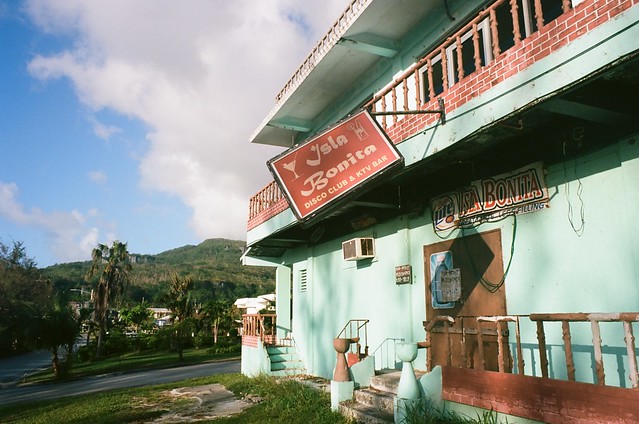Rota is the southernmost island in the U.S. Commonwealth of the Northern Marianas Islands. It sits about halfway between Guam and Saipan. There are two main villages on Rota, Songsong and Sinapalo. Obviously the island was named after Rota, Spain when the Spanish occupied it. It was also occupied by Germany followed by Japan. The U.S. took control of it from the Japanese during WWII. During the Japanese occupation it was transformed into sugar cane plantations.
This was my third trip to Rota for work. We delayed our mobilization to the island a week due to Typhoon Dolphin. The typhoon went right between Rota and Guam but Rota still had winds of 110 mph and over 10 inches of rain. By the time I arrived most the power was restored and most of the roads were cleared of debris. We had an interesting time getting to the island. We chartered a flight from Saipan on a small twin engine 8 passenger Piper. When we got to the island it was completely engulfed in a thunder storm. The pilot looked around a bit then headed back to Saipan. The next attempt, about an hour later, went well.
Rota has a very small tourism industry. This is likely due to the lack of nice beaches, almost the entire island is circled by razor sharp coral. If you can get in the water and dive or snorkel on the reef you will see some of the most pristine sea life anywhere. Colorful coral, giant clams, turtles, sharks, tropical fish, etc. I didn't get in the water this trip due to rough seas.
Over the years that I have been going to Rota I have seen it in decline. There are less people and less businesses in Songsong village. There were only 4 restaurants open on the island this time. Many buildings are abandoned and some that sustained damage from the typhoon will likely not be repaired. I'll start off this essay with some photos around Songsong. I used an Olypus OM-1 with Kodak Portra 400 ad Ektar 100. These first ones are all Ektar 100.
The Isla Bonita has seen better days.
 Isla Bonita
Isla Bonita by
Bryan Chernick, on Flickr
 Pinatang Park
Pinatang Park by
Bryan Chernick, on Flickr
 Abandoned Building in Songsong
Abandoned Building in Songsong by
Bryan Chernick, on Flickr
 Songsong Village building
Songsong Village building by
Bryan Chernick, on Flickr